First Cobalt (TSXV: FCC; US-OTC: FTSSF) has found near-surface disseminated cobalt and silver mineralization outside the veins that were the focus of historic underground mining at its Keeley project near Cobalt, Ontario.
Drill hole 13, in the southern part of the historic Keeley mine, returned a 30-metre intercept grading 0.07% cobalt starting from 23 metres down hole. The intercept includes 15.7 metres of 0.12% cobalt and 6.2 metres of 0.21% cobalt.
The drill hole returned 72 metres of anomalous cobalt grading 0.043% from 15 metres below surface.
“The 72 metres of 0.043% is not economic but the point is that you’re in a system that seems to be distal from the vein that was mined historically, so you’re in a hotspot, and we have to drill a few more holes down there to see if there’s a halo that we can start to define,” says Trent Mell, First Cobalt’s president and CEO, in a telephone interview from a core shack on the property. “This proves to the market that we’re on to something and there is disseminated mineralization, and the mineralization is not hosted solely in the vein.”

First Cobalt president and CEO Trent Mell scouting properties in the Democratic Republic of the Congo. Credit: First Cobalt.
Drill hole 13 was collared next to the Woods vein, which along with the Watson vein accounted for more than 80% of the silver production in the southern end of the cobalt camp area known as Silver Centre.
“It looks like we drilled into an altered structure,” Mell says. “It’s hard to say precisely where relative to Woods because we are now seeing that Woods is more of a mineralized zone rather than a vein in this area.”
While the cobalt grades are markedly lower than some of the chip samples the company has taken from the property, Mell says, it’s what you expect to see when you go from mining selectively — in a narrow-vein, underground mine — to a potential bulk-tonnage, open-pit scenario. The combination of an open pit and a lot of tonnes means that lower-grade material can be quite economic, he says, adding that while the drill results encourage him that the company is on the right track, there is a lot more work to do.
The market reacted negatively to the news, sending First Cobalt’s shares down 11¢ to 93¢ per share, on 1.1 million shares traded on Feb. 5. But the stock has rebounded, closing at $1.01 on Feb. 6. Over the last year First Cobalt has traded within a range of 42¢ (May 2017) to $1.65 (November 2017).

First Cobalt’s Frontier cobalt property in northern Ontario’s Cobalt mining camp. Credit: First Cobalt.
“When we released the long hole some of the bigger institutions called us and said ‘way to go,’ but the retail side thought it was low grade,” Mell says. “I’m afraid that some of our readers saw the grade and assumed that the press release was bad news when in fact the opposite is true.”
Mell notes that the length of the hole, at 72 metres, has “camp-wide implications.” The company’s 100 sq. km land package includes 50 past-producing mines, 13 of which First Cobalt plans to drill this year in its 26,500-metre drill program.
The past-producing Keeley and Frontier mines in the town of Silver Centre, 25 km south of the town of Cobalt, were developed and operated as separate mines before being integrated in 1961. Between 1908 and 1965, Keeley-Frontier produced over 3.3 million lb. cobalt at a recovered grade of 0.5% and 19.1 million oz. silver at a recovered grade of 1,644 grams silver per tonne.

A driller on a rig at First Cobalt’s project near Cobalt, Ontario. Credit: First Cobalt.
“If we’ve proven in one tiny part of our land package that the mineralization extends beyond the vein, then by extension we would hope to find the same opportunities across the cobalt camp,” he says. “This camp was mined starting from 110 years ago — you didn’t drill back then, you found a vein and you mined it — and so drill assays are preciously few, so we’re doing a lot of firsts. We’re assaying for cobalt and that wasn’t done in the past. There’s just so much here that a century later hasn’t been done … and we’re in the first inning here in terms of our drilling.”
So far, the company has reported half the assays from its 6,000-metre drill program last year.
First Cobalt has $30 million in the bank to fund its 2018 drill program.
In addition to being the largest landowner in Ontario’s cobalt camp, it also has a mill and the only permitted cobalt refinery in North America capable of producing battery materials.

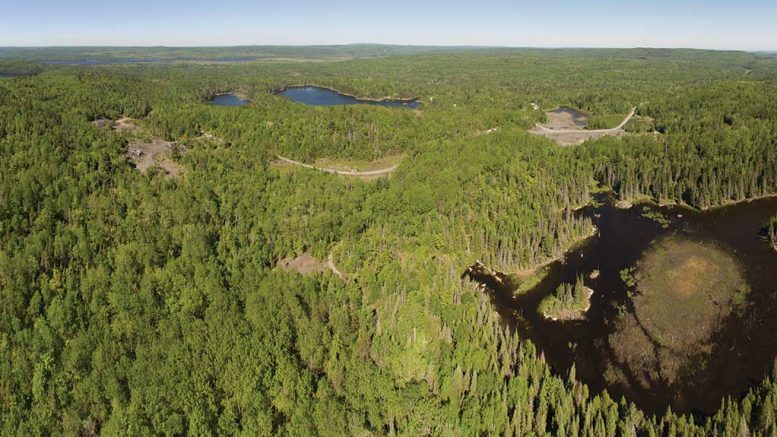
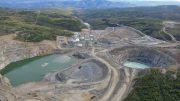
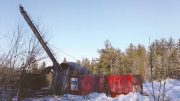
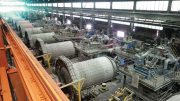
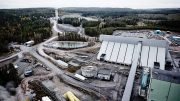
Be the first to comment on "First Cobalt finds new mineralization at Keeley"